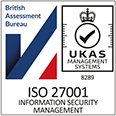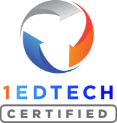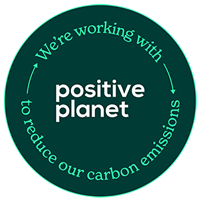Dr Zoe Bradfield, Senior Midwifery Research Fellow from Curtin University on ‘Professional Portfolios in Midwifery.’ This recording is from our 2022 Perth, Australia MiniBash community event. Videos are for educational personnel only and require a live educational email to watch. You can read the video transcript below.
Transcript:
You go back there. Thank you. Thank you for the opportunity. It’s nice to to join you.
I always loved coming to PebbleBashs and, you know, collectives. I’ve, yeah, been involved with pebble pads for probably five years now. So Look, I want to start by acknowledging the traditional owners of the land that were on the Wajak people of the Nangar nation. It is a privilege to live and to work on Wojak Nongaburger.
I am a senior research fellow with a joint appointment between Curtin University and women and newborn health service, a midwifery academic.
And I was just reflecting that I’m doing much less in the teaching and learning space at the moment. Sorry, guys. Let me just remove this other line because it sounds like there’s Sure. Sure.
Alright. So oh, it’s just advancing me. Excellent. Alright. It’s it’s keeping me going even before I click.
So look, I’ve been involved with PebblePad for for several years now, but clearly this presentation has a mind of its own and wants to continue without me clicking it. So let’s just move on. I’m excited to be able to share with you some of the ways that we are using the students’ work within an e portfolio that is housed within PebblePad as more than just student work and actually ties into a lot of the conversation that has just been had and and what a fantastic conversation it was. So I’m not sure if there’s a way to stop that advancing because it’s going to spoil all my surprises.
But as a background, for those of you who are not from a nursing or midwifery background, I know that we have some teachers and other disciplines and professions in the room.
Effectively, we use the PebblePad eportfolio as a repository for student clinical work, and that’s a common way that it’s held for for practice based professions. Obviously, evidence of accomplishment for the standards for practice, which are essential for students to be able to gain entry to registration. The students record time sheets. They also undertake reflective practice And of course, we provide formative and somebody feedback for them when they’re actually using the e portfolio and recording their clinical work and it is an in vivo way for us to be able to provide the feedback that students need in the way that they’re engaging with their clinical practice.
Their work integrated learning, which is mandated.
So we have, you know, certain standards that are required to be met for our clinical professions. They are set by AdMac, which is our accrediting body. And for example, for those of you not aware apologies if it’s repetition, but for those of you not aware for midwives all around Australia, they need to evidence more than four hundred pieces of clinical eating care. So one hundred pregnancy care, thirty labour birth, one hundred postnatal care, twenty full examinations of the newborn, It’s a really rigorous course, moodle free courses around the world, actually, are probably some of the most demanding courses and probably why PebblePad midwifery in PebblePad, the discipline of Midwifery uses PebblePad the broadest and the deepest. We really get to use all of the things about pebblepad that are quite sophisticated.
So we said about in twenty sixteen, we were looking at the way that we were preparing our students, and we wanted to be able to pivot from what what had been a paper based portfolio in an a four lever arch file, and we wanted to move to the digital space. But we wanted to do more than just transform it into the digital space. We wanted to not just have effectively a paper version digitally, but we wanted to be able to capture and enhance our ability to pull some of the analytics and the data that the students had to record for their courses, and to be able to use that to really support their learning and to develop our teaching, which is really important.
So as well as, you know, getting what we need in order for you to be registered, we wanted to be able to harness that data in a way that we would never have been able to in a paper based portfolio, and we’re really thrilled to do that I never forget the two weeks where Allison Poot came over. She did two weeks training with us, and we absolutely worked so hard We would do training in the day with her. And then at night, we’d go home and develop our portfolio, and we’d come back and show what we’ve done the next day, and we’d redo it. And we launched live in our course two weeks later.
I don’t recommend for anyone, I think, give yourself a little bit more time. But we just, you know, jump straight in. So And but what we have now is a really robust portfolio that enables not just the capturing of student data, but we’re going to show you some of the more sophisticated things that we’re doing, that we can do because of the beautiful product that PebblePad have And so this is, you know, just a base plate. It shows you the gray bar across the top.
All of these are drop down tabs There are it’s not uncommon for a student to have in excess of one thousand assets in their asset store at the conclusion of a course. And that’s just because of the significant volumes of things that need to be able to evidence.
Some of the benefits that we have realised obviously have come with, you know, we didn’t know the pandemic was coming, but it came. And our ability to remain connected to our students in the clinical environment, even when our clinical facilitators that we pay staff to go and help the students in the clinical environment, couldn’t go in to the hospital because they were unallowed to to to gain entry because of the pandemic.
Fortunately, our student clinical placements were protected, but there was this separation from clinical teachers not coming into the clinical environment, but they could then invest that time as best as they could to really look at how the students are learning, what they are recording, how they’re reflecting, also a bit of student well-being, and so we could connect in with our students, and we could talk to them, particularly if there were those where we saw some reflections that had anything that was particularly concerning that we could connect with them and really offer that support straight away.
So we’ve seen student engagement since the implementation of this has increased, and then also their performance then has has increased. We have students as far north as Kananara and as far south as Esper and everywhere in between and we can access some real time twenty fourseven regardless of where they’re doing their clinical placement and we can do that. So look, that’s a bit of a background. We’ve also so I mentioned that we’re wanting to to use the data that we’re capturing, and we’re really, really, really, only three really’s excited about this learning analytic project that we have developed.
And it’s been embedded right from the get go. So the data that we’ve been collecting is ready to harvest. And we’re hoping that we’re successful in getting a summer intern that we can get some data analysis happening over the summer break and at our pebble bash gig, we will be delighted to be able to share with you some of the learning analytics that have come from the clinical experience data that the students are collecting. Wow.
Alright. Sorry. That’s alright. So I’m gonna show you what That’s the baseline. So that’s what students have to do, right, to meet course requirements. And so I’m going to show you how we’ve supported students to use those key things that they have to deliver during their student experience, to to develop a professional portfolio.
We know digital literacy skills are really, really important. They are preferenced by and marked our accreditation society, and when we’re cared for by clinical people, we want to know that they have some digital literacy and they know how to do it particularly because half the machines they keep us alive are digital So we need to be able to interface with with digital elements.
This is a really authentic integration of students’ assets, so the stuff, the gold that they create as students.
There is this is a light bulb moment for them, and some of the conversation was How do students what at what point do they transition? When do they begin to understand that what I’m doing as a student is absolutely essential for me to be a graduate and and a person who is a professional.
This activity has delivered in spades for us, and it was it’s very simple. I’m I’m going to show you just how simple it is to do this.
Because for them, they are gathering all of these assets that are essential for this student journey, and in a moment’s notice, the focus and the orientation and the utility of them changes.
It helps them to consider their professional profile and to also be able to deliver a narrative of distinctiveness for them as a graduate. We know if any of you sat on interview panels for graduates, there’s very little things that actually separate them from each other. They all have sort of fairly similar attributes. So how do we pick one above the other?
One is not generally more qualified than the other because they’re graduates of entry to registration, And so what are the things about you that are distinctive that would help you to be in our profession? So maybe Will that start? Can you press play on that? Because I’m thinking if I click it it might.
Yeah. There you go. Excellent. I’m going to show you a couple of student portfolios. These were our earlier iterations.
I probably need to update these examples, but this is Sarah. She was a registered nurse before she came to Midwifery. And so she told us a little bit about herself on her landing page. She then went on to talk to us about her qualifications and she’d done some education at various universities.
She went to a national professional conference and told us about the experience there. She showed us what feedback she’d received from women that she had personally cared for, and that’s a really impactful way to deliver that information and she also serves on a couple of professional bodies. And so that was a good example and a way for her too to show you that story. Her colleague Semra also did the same thing and showed her Turkish heritage and she was a doula before she came to midwifery.
And so these are really interesting things that you know, really helped her tell the distinctiveness of Semra’s story, her CV was linked there. She’d also put in some feedback from women that she’d cared for her continuing professional development. Now students have to do probably twenty elearning courses as part of their course. They are the elearning that is required for all registered midwives.
And so they’ve already completed that before they finish our course, so they can show how they’ve done that.
Who’s inspired me, helps me to understand what is my focus, and what am priorities. And she also started to launch a podcast, and so she was going to host that there So it just helps to show, yes, I’m a graduate, and I’ve got these key graduate attributes, but these are things that are unique and distinctive about me. So we do this in a shop, we asked the students to come together with a checklist of assets ready to go for the workshop, and it’s very, very quick. I’m gonna show you now. If you can press play on that video, Jack, oh, no it’s working. Yep, there we go. So we just literally go to create a portfolio.
We’re going to create a fictitious portfolio for a student, Sophie Gabler, we encourage the students to introduce themselves on their landing page where they have a bit of it about me. Consider their branding, we’re asking them to collect imagery of their work, obviously using appropriate attributions and copyright. But to think about how you’re going to present yourself This first landing page, we asked them to put a synopsis of their philosophy to statement. They don’t have to think about this.
So we’re not having them in a workshop thinking, oh, how am I going to do that? They’ve already done this as part of their assessments. And so they go, why don’t you make us write a philosophy and then all of a sudden it becomes relevant and particularly doing this paragraph format, it’s really succinct. Then they can talk about CVs, and we show them, hey, remember you’ve used a lot of these hyperlinked templates previously, we’re gonna show you how to do them.
So again, think about your branding. What are you going to show is unique and distinctive about you. And so to put rather than having a big wall of text, we’re all consumers of web pages nowadays. None of us want to breed big walls of text.
So put in a little excerpt and then be clever and hyperlink your full CV. So rather than making people to read the whole document, you can have it sitting there and the potential employer can bring up your full CV if that’s something that they want to have a look at. And then you can move on to another tab and you can look at receiving or demonstrating your continuing professional development with your elearning So again, I mentioned they have to do these twenty elearning packages. They’re the same ones that our colleagues in the clinical environment have to do.
So you’re showing to your employer hey, I’m already ready to go. You can employ me tomorrow because I’ve already done my mandatory elearning, my hand hygiene, my manual handling, my all those other things that we have to do. And I’m not going to bore you by bringing in pieces of paper and showing you an interview that I’ve done it and that I’m compliant. I’m going to do this in a really dedicated way.
I’m going to put the text there, and I’m going to link it to the assets that are already sitting in my asset store that I’ve had to evidence as a student I kind of got a little bit bored of, and maybe a little bit grizzly as a student. Why are we doing so much elearning? And then all of a sudden, it becomes really, really relevant. And really, really important.
Because we begin to be able to show the students this is how, and this is why we’ve asked you to do this. Apart from the fact that the theory is relevant, necessary, You’ve now got this opportunity to link a certificate in your from your store, you don’t have to do anything else. You just have to hyperlink it. And of course, most people are well able to do that.
And so they they have those skills to be able to demonstrate that there. And then again, Tell us a little bit about yourself, what’s it meant, the care that you’ve provided to people, what’s it meant, and so using another feature where the the students can actually, you know, again, thinking about their branding, setting up their banner for the page, but thinking about what do I want people to know about me, the care that I provide, and what it’s meant to other humans that I’ve provided care for.
And so you can use that really lovely little quote feature that you can just embed that and that makes it stand out really clearly that it is somebody else’s words and and, you know, that you’ve, you know, made a big impact to people’s lives. So that’s you can go on adding as many tabs as you like, but effectively That is the the professional portfolio or an excerpt of how students can develop the professional portfolio. And obviously, we can continue to do that in the workshop environment.
But what this really neat feature does is that students have, until this point, been really used to developing the e portfolio adding to it in order to be assessed. In order to maybe share with an assessor, maybe they might have collaborated on some group work with a student. But what they have never done until this point is to actually share it as an outward facing product.
And it does, in effect, become a a version of a mini webpage. And so the students can really quickly see how they can share this story about themselves, about their graduate distinctiveness, and for them to be able to bring together these collection of assets that they’ve developed in a student mindset to actually show why they are a distinctive graduate.
For employability.
And so here, the student can email the potential employer, and then hyperlink this professional portfolio to the email and it’s a really neat, sophisticated way for the students to be able to share their journey with that person who might seek to employ them.
So look, a great way for us to intentionally consider our professional persona, a way for midwives to think about the way that they’re engaging with consumers and more, they’re wanting to move into primary care models, which is often private practice. For those who have multiple registrations with ARPA, like we have physios becoming midwives, their psychologists becoming midwives, you could have a portfolio for each of your disciplines to be able to keep a repository of all your CPD for your registration. And of course the wonderful thing about PebblePad for our students, obviously, and for all of them, is the alumni accounts and that they can continue to contribute to it in perpetuity.
So look, I won’t I’ll skip over that one, but just to acknowledge my colleague at curtin Dr. Leslie Kalukas, who is the course coordinator for the graduate entry master’s midway free, She’s a wonderful colleague and supports all of my hair brained ideas. And also Jacqui and Alison, they are employees of PebblePad, but we very much feel like they are colleagues of ours. And I think that’s part of the the beauty of belonging to the PebblePad village is that it is really this this wonderful collective. So thank you.







